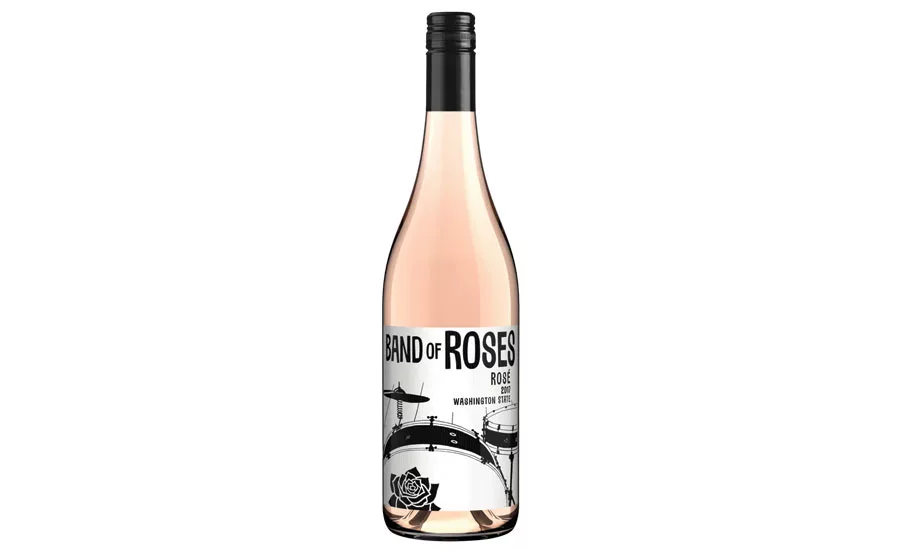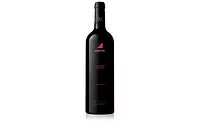Premiumization trends impact wine market
Category experiences steady growth

Previously, wine consumption was more likely to be associated with a wealthy and lavish lifestyle. However, as more wine companies are producing premium, yet affordable brands, more consumers are embracing the grape and considering themselves “wine connoisseurs.” New varietals, millennial-forward trends and innovative packaging designs are helping shape today’s changing wine market, experts state.
“Consumers are increasingly purchasing higher priced wines and other alcoholic beverages, which has contributed to revenue growth for wineries, wholesalers and retail establishments,” says Chris Lombardo, lead industry research analyst at Los Angeles-based IBISWorld.
“Growing per capita disposable income and low unemployment have also increased consumer purchasing power,” he adds.
As a whole, the wine category has performed particularly well, experts say. “Total U.S. dollar sales of wine have grown by an estimated 15 percent from 2013-18, and [were] projected to reach $62 billion [in 2018],” Chicago-based Mintel’s November 2018 “Wine – US” report states. “The rate of growth has slowed since the 4.2 percent gain in 2015, and appears to be settling in to a more moderate 1-2 percent annual growth through 2023.
“Wine has outpaced the growth of alcohol sales in total, but has maintained a steady share of the market, while spirits gain in the wake of beer declines,” it continues.
Data from Chicago-based Information Resources Inc. (IRI) also suggests moderate growth, showing a 2.3 and 7.3 percent increase in table wines and Champagne/sparkling wines, respectively, in total U.S. multi-outlets and convenience stores for the 52 weeks ending Dec. 2, 2018. The data set also marks total table wine sales at $10.5 billion and total Champagne/sparkling wine sales at $1.1 billion for that same timeframe.
(Individual brands)
| DOLLAR SALES | % CHANGE VS. PRIOR YEAR | CASE SALES | % CHANGE VS. PRIOR YEAR | |
| Barefoot | $666,072,031 | -0.2 | 10,017,411 | -0.6 |
| Sutter Home | $385,417,717 | 3.9 | 5,779,096 | 2.7 |
| Woodbridge by Robert Mondavi | $347,245,684 | 0.3 | 5,313,405 | 0.8 |
| Franzia Box | $341,739,600 | 1.6 | 12,391,200 | 1.4 |
| Yellow Tail | $269,115,369 | -0.2 | 4,069,559 | 0.6 |
| Black Box Wines | $232,281,502 | 13.7 | 3,892,109 | 13.5 |
| Kendall Jackson Vintners Reserve | $199,551,495 | 4.0 | 1,387,390 | 5.0 |
| Apothic | $194,064,496 | 1.5 | 1,665,034 | -0.2 |
| Josh Cellars | $184,226,655 | 34.4 | 1,210,098 | 32.9 |
| Chateau Ste. Michelle | $183,458,770 | 3.0 | 1,563,347 | 3.8 |
| Total sales* | $10,470,776,144 | 2.3 | 127,568,224 | 0.2 |
*Includes brands not listed.
Source: Information Resources Inc. (IRI), Chicago. Total U.S. supermarkets, drug stores, mass merchandisers, gas and convenience stores, military commissaries, and select club and dollar retail chains for the 52 weeks ending Dec. 2, 2018.
The type of wine that consumers are drinking can help explain the steady year-over-year increase in sales, notes Nathan Greene, consulting analyst at New York-based Beverage Marketing Corporation (BMC). “Flavor is driving growth,” he says. “Prosecco and Rosé are the strongest growth varietals.”
A January 2018 Nielsen Insights titled “Heard it Through the Grapevine: Wine Trends to Watch Out for in 2018” touts the impact Rosé has had on the category. “In the last several years, Rosé wine has exploded in popularity among wine drinkers,” it says.
“Interestingly, Rosé buyers are expanding total wine sales, as consumers are adding Rosé to their carts as an addition to other wine varieties they also purchase,” it continues. “For example, Rosé shoppers are increasingly adding more white wines, such as Chardonnay and White Zinfandel, to their baskets compared to a year ago. This indicates that Rosé is a popular middle ground for consumers who prefer sweet or dry white wines.”
(Individual brands)
| DOLLAR SALES | % CHANGE VS. PRIOR YEAR | CASE SALES | % CHANGE VS. PRIOR YEAR | |
| La Marca | $112,668,215 | 23.6 | 636,292 | 18.8 |
| Korbel | $104,841,278 | -1.0 | 728,141 | -1.7 |
| Cooks | $94,371,509 | 2.4 | 1,117,432 | -1.5 |
| Barefoot Bubbly | $91,682,737 | 3.1 | 831,048 | 2.2 |
| Andre | $84,265,396 | 2.3 | 1,161,458 | -2.9 |
| Veuve Clicquot Ponsardin | $48,768,820 | 6.2 | 80,129 | 4.1 |
| Cupcake | $42,849,135 | 4.3 | 318,975 | 2.5 |
| Ruffino | $38,813,430 | 23.6 | 253,973 | 20.4 |
| Stella Rosa | $36,101,722 | 27.1 | 260,452 | 25.0 |
| Chandon | $35,533,505 | -5.9 | 170,715 | -5.8 |
| Total sales* | $1,142,949,177 | 7.3 | 8,666,885 | 4.1 |
*Includes brands not listed.
Source: Information Resources Inc. (IRI), Chicago. Total U.S. supermarkets, drug stores, mass merchandisers, gas and convenience stores, military commissaries, and select club and dollar retail chains for the 52 weeks ending Dec. 2, 2018.
The same sentiments could be said for Prosecco, as it accounts for almost 20 percent of the total sparkling wine category, the Insights adds.
Chicago-based Euromonitor International highlights how red wine blends also are contributing to the category’s growth. “Wine composed of blends of red varietals has for the past decade provided an accessible entry point for new wine consumers,” it states in its June 2018 report titled “Wine in the US.”
“Brands such as Apothic and Ménage à Trois have been the most noteworthy benefactors of this trend and consistently witnessed double-digit volume growth over the review period,” it adds.
The market research firm also expects Chardonnay blends to enjoy a promising future.
Similarly, IBISWorld’s Lombardo recognizes the popularity of certain varietals. “While there have been certain wines that have briefly captured public attention over the past five years, the classics still largely dominate the market,” he says.
“These include Cabernet Sauvignon, Chardonnay and Pinot Grigio,” he continues. “Additionally, imported varieties have historically been popular in the United States, and this trend holds true today, with consumers of all age demographics seeking out new international varieties.”
Additionally, strong value propositions can be credited to the category’s stable growth, BMC’s Greene says. “Consumers are evaluating the value proposition of products leading to trading up when applicable and trading down if a super-premium product does not deliver,” he says.
Furthermore, the overall health-and-wellness trend plays a noteworthy role in the performance of the wine category, experts note. “Many consumers are seeking products with lower calories and/or stronger health connections to fit within a lifestyle aimed at achieving ‘health and wellness,’” Greene says.
IBISWorld also highlights the “healthy halo” draw of wine consumption. “Over the past five years, consumer preferences have shifted away from premium beer brands toward wine and spirits of all price ranges, contributing to the increased volume of wine sales,” it says its December 2018 report titled “Wineries in the US.”
“One factor driving this trend is consumer health concerns,” it continues. “Medical studies released during the past decade have shown that moderate consumption of red wine can benefit overall heart health.”
The millennial movement
As with seemingly most alcohol categories, millennials are a force to be reckoned with. “Historically, baby boomers represented the largest consumer segment for wineries and wine bars; however, in the past five or 10 years, millennials have captured the spot for most wine consumed,” IBISWorld’s Lombardo explains.
“The reason is largely two-fold: smaller, craft wineries have popped up in recent years, and millennials are generally drawn to craft-style alcoholic beverages in general,” he says.
IBISWord’s report highlights how millennials, in particular, are more willing to expand their palates toward different styles of wine, moving away from the standard light beers.
“Millennials represent an extremely curious group of consumers,” Euromonitor’s report explains. “To the benefit of foreign producers, they seek out products from new locations and hold little preference for domestic wine.”
BMC’s Greene also notes the changing demographics of the typical wine consumer. “In general, older consumers — early millennials, Gen Xers and baby boomers — make up the majority of the categories consumption,” he says. “However, recent innovations and trends that are currently driving the category are actively opening up the market to younger consumers, a trend that we expect to continue in future years.”
A can-do approach
In the ever-so-crowded wine marketplace, new and innovative packaging designs can be a differentiating factor. Canned wine recently made its appearance in the market and is a key driver of the category, experts note.
“Canned wine has seen a growth in production and adoption in recent years, representing one-in-10 launches tracked in 2018,” Mintel’s report says. “Canned options have done well to democratize the category, making products more casual and portable, finding particular appeal among younger consumers.”
Canned wine’s growing presence in the industry is undeniable, IBISWorld’s Lombardo says. Current estimates have annual canned wine sales around the $40 to $50 million mark, he adds.
Introducing canned wine has brought about more opportunities for consumer consumption. “Single serve makes consumption more accessible as consumers can avoid wasting a 750-ml bottle if they don’t plan to drink multiple servings in a session,” BMC’s Greene explains. “Additionally, single serve allows wine to more compete directly with malt products including traditional beer and [flavored malt beverages] FMBs.”
Cans provide a multitude of benefits, all the while further making the category more accessible to new consumers, allowing for easy transport and consumption in locations where glass is not ideal, he adds.
For example, Tualatin, Ore.-based Union Wine Co. offers five varietals of its wine in cans. In the 12 months from July 2017 to July 2018, the brand saw a 52 percent increase in sales, said Ryan Harms, founder and owner, in Beverage Industry’s July 2018 issue.
“We attribute this success to the portability, recyclability and cost-efficiency of putting wine in cans as well as the explosive growth of the canned wine category,” he said.
Another alternative to the traditional wine bottle making headway is aluminum bottles. In January, Calistoga, Calif.-based Sterling Vineyards, a division of Treasury Wine Estates, launched a trio of wines in 375-ml single-serve aluminum bottles. Available in Chardonnay, Cabernet Sauvignon and Rosé, the lineup is designed to improve convenience for consumers, the company says.
The 375-ml category is showing double-digit growth, with an increase of 54 percent in dollar sales and 35 percent in volume year-over-year, according to data from IRI at the time of the announcement.
Although innovative packaging offers new possibilities for brands, the category is experiencing some challenges. “Fragmentation of the market remains an issue that is further exacerbated by new growing entrants, making it difficult to attract and retain consumers, especially in a market where millennials gravitate to [brand] switching,” BMC’s Greene says. “Cyclical nature of the market is likely to continue, in that many of the leading growth brands [in the past] five or so years are now flat or declining, which may very well happen to today’s growth leaders.”
As the wine connoisseur evolves, consumers can expect the market to become even more accessible, with a wider range of flavors and styles, and a new field of leading brands, most from existing leading suppliers and maybe even from new disruptive players, Greene says.
“The rate of innovation for all aspects of the industry including products, packaging, distribution and styles will accelerate in the coming years,” Greene says. BI
Looking for a reprint of this article?
From high-res PDFs to custom plaques, order your copy today!






